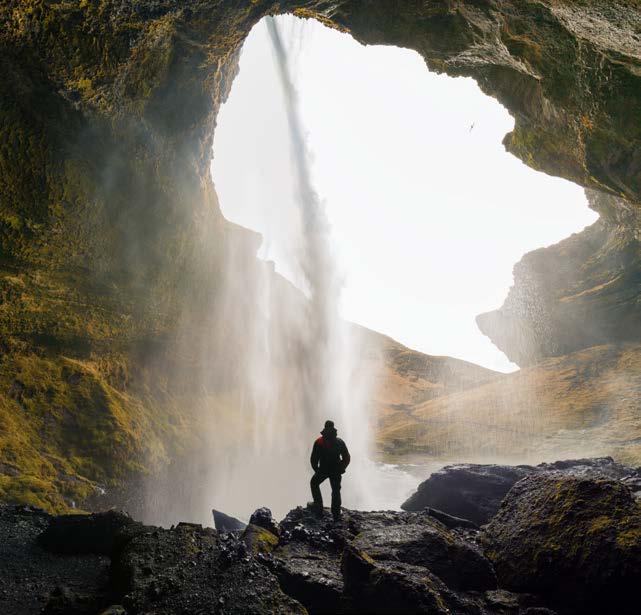
7 minute read
THE LAND OF FIRE AND ICE
But where should you start and what’s the best way to travel around Iceland? Where are the hidden gems and what do you absolutely have to see? Our guide will help you to see it all a little more clearly.

Advertisement
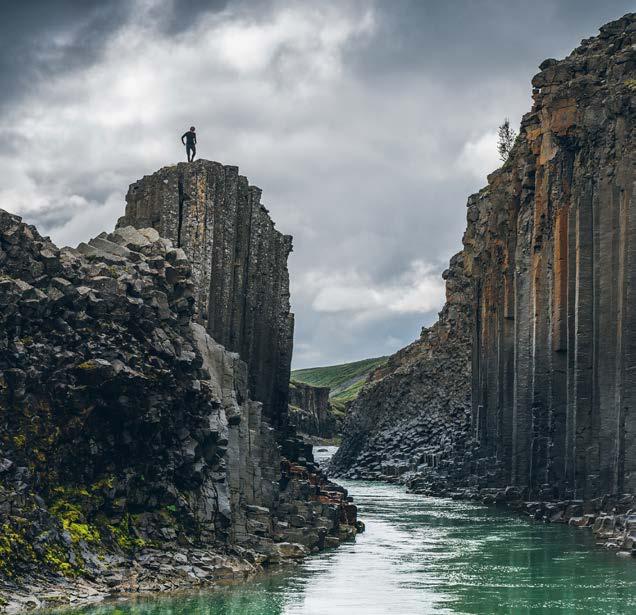


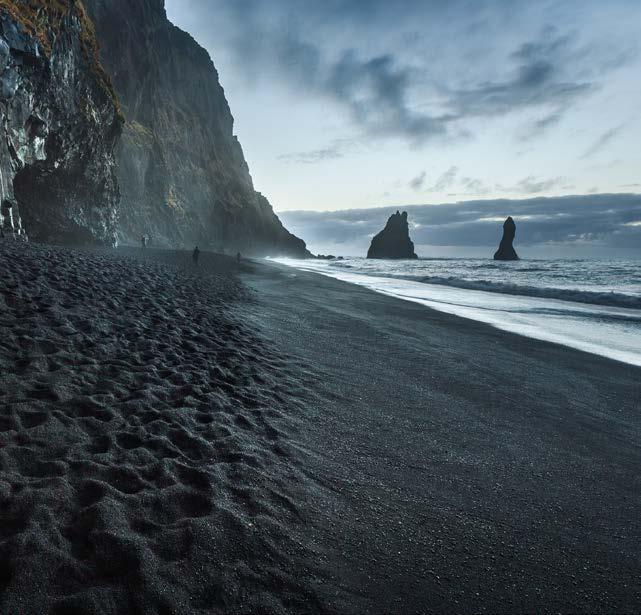
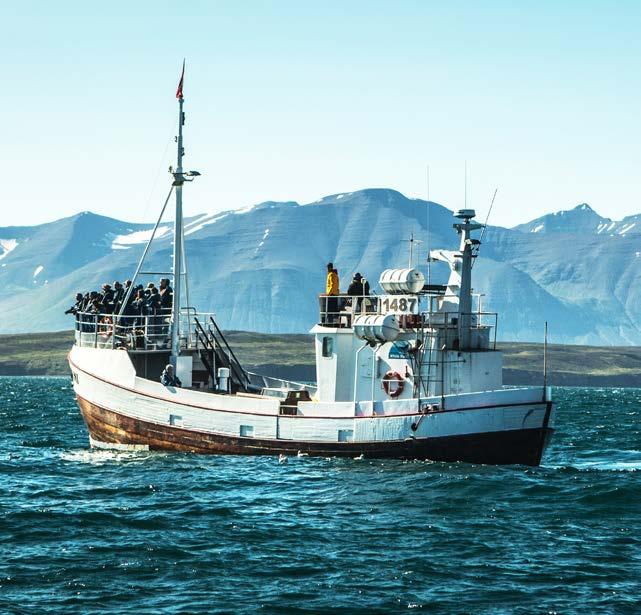
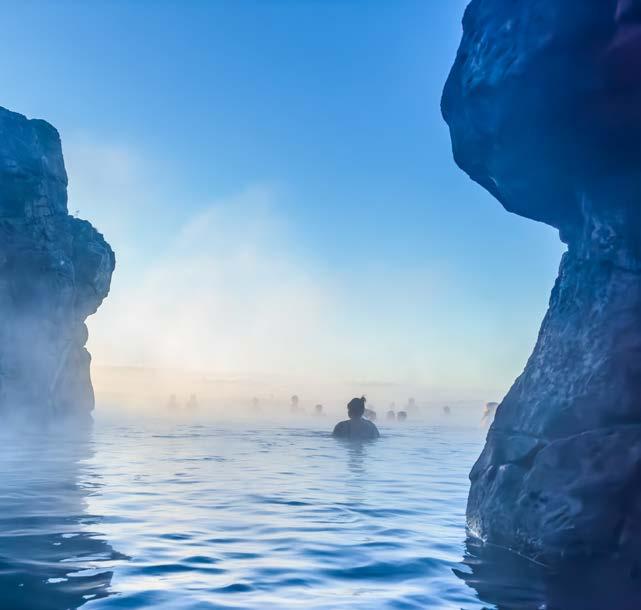
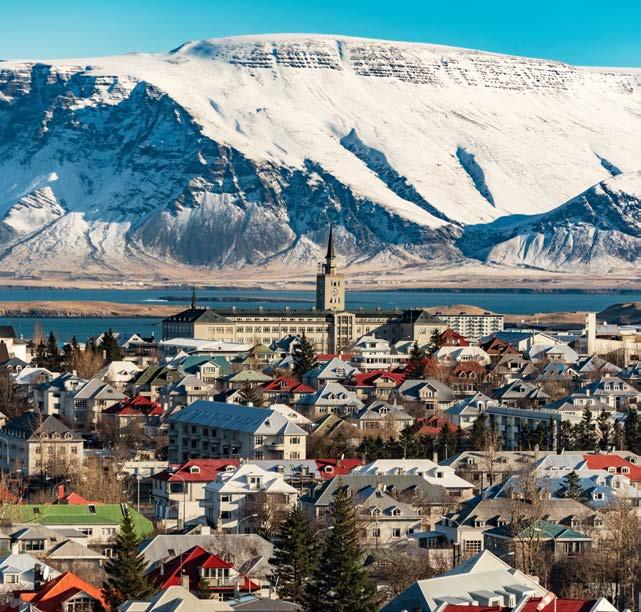



1. REYKJAVIK
A trip to Reykjavik is always an adventure. Iceland’s capital city is a place that’s brimming with variety and entertainment. Visitors can expect a pulsating metropolis full of culture, beautiful nature and all kinds of exciting activities. From breathtaking natural delights and cultural sights to a vibrant art scene and countless leisure options, Reykjavik is not somewhere you’ll ever get bored.
Top tip: Don’t miss out on taking a look at the street art on a walk through the three main roads, Laugavegur Street, Grettisgata Street and Skólavörðustígur, and pay a visit to the imposing Hallgrimskirkja!
4.
THAKGIL
Green and rugged. Wide fields and deep canyons.
A mix of The Shire and Mordor – that’s the best way to describe Thakgil. It’s the perfect location to take a breather after the first stops, unwind and simply take a walk. The beautiful scenery is of course never out of sight.
Top tip: Spend a night camping in the wilderness and observe the starry night's sky. You might even see some of the Northern Lights.
7. EAST FJORDS
Iceland’s East Fjords are a wonderful destination for anyone wanting to experience a sense of vastness. The East Fjords stretch along the southeast coast of Iceland. No matter whether you go for a hike through the glacier, a kayak tour of the fjords, a boat trip along the coast or a tour of the geysers, Iceland’s East Fjords make for an unforgettable experience.
LET’S GO:
2. THINGVELLIR NATIONAL PARK AND THE GULLFOSS WATERFALL
Thingvellir National Park is one of the most famous conservation areas in Iceland. It is located in the Golden Circle region, which is one of the most popular tourist areas in the country. The park is renowned for its unparalleled landscape, which is made up of lava fields, geothermally active areas and distinctive flora and fauna. Once you’re there, you’ll come across the first waterfall of your road trip. The Gullfoss waterfall is one of Iceland’s most famous waterfalls and perhaps even one of the most popular attractions in the country. The waterfall is an impressive combination of two waterfalls that span 32 metres in width with an impressive 11-metre drop. It’s hard to imagine if you haven’t seen it for yourself.
Top tip: Between October and March, you can observe the incredible Northern Lights from the Thingvellir National Park, lighting up the night sky in a truly magical way.
5.
DYRHOLAEY PENINSULA
Dyrholaey Peninsula is an unbelievable location on Iceland’s south coast. From the lookout point, visitors can enjoy a breathtaking view of the rugged cliffs and the pounding surf. The many puffins you’ll come across on this coastline lend Dyrholaey Peninsula a certain sense of flair, and not far away you can take a stroll on the black sand beach at Reynisfjara.
Top tip: Spend a night in Vik, “the bay of the valley of the swamp”, and watch the sunrise in the morning from the parish church.
8.
Studlagil Canyon
3. SKOGAFOSS AND KVERNUFOSS
From the National Park, you can go right on to the next natural spectacle – the Skogafoss waterfall. It’s a fantastic spot to experience the beauty of nature and the power of the elements. With its 80-metre-high rock face and width of 25 metres, it is one of the largest waterfalls in Iceland and makes for a stunning backdrop. Just five minutes further on you’ll find a hidden gem: the Kvernufoss waterfall. Just as you can with the Seljalandsfoss, you can walk behind the waterfall and take in the beautiful sight in peace – away from the 300 other tourists.
Top tip: Stop by at sunset to make the most of the Golden Hour.
6. JOKULSARLON
This glacier lagoon in Iceland is one of the most spectacular natural wonders in the world. With its glittering icebergs, impressive waterfalls and unique landscape, it’s a truly one-of-a-kind experience. But it’s not just the natural surroundings that appeal – the animal life is also a particular point of interest. Marine birds, seals and even penguins turn the Jokulsarlon lagoon into something quite special.
Top tip: You can also walk from here to the nearest black sand beach – Diamond Beach – in just five minutes.
9. HUSAVIK
Nestled amid Iceland’s wild beauty lies the charming town of Husavik. With its picturesque streets, traditional timber houses and breathtaking views, Husavik is a veritable gem that simply has to be explored – from the expansive landscapes to the local shops and restaurants.
Top tip: Discover the small town of Seydisfjordur and its handicrafts.
This canyon, deep in the Jökuldalur glacial valley, wasn’t known about just a few years ago because it was still flooded. Thanks to a major dam project, the once grey and wild glacial river is now clear and serene. Surrounded by towering reddish basalt columns, the river shimmers in turquoise blue.
Top tip: Go whale watching! Just book a boat tour in Husavik and you’ll be guaranteed an unforgettable experience. 10.
SKY LAGOON
The final stop, not far from where we started in Reykjavik, is the place to unwind after a long road trip. The artificial lagoon was opened in April 2021 and is located just outside the city centre. In comparison to the popular Blue Lagoon, everything is smaller and quieter, and it also boasts a spectacular view of the sea.
Top tip: A must-try is the seven-step Sky Lagoon ritual –for the ultimate relaxation.
Top tip: Stop by in summer, as the river is made cloudy by the rain and the hiking trail is also easier to complete.
Hiring A Car
A road trip around Iceland is one of the best options for exploring and experiencing the wild north. The Icelandic landscape is characterised by rugged mountains, impressive fjords and unique, untouched nature. So it’s advisable to book a rental car so you not only have flexibility, but you can also get to remote spots much more easily. You should also factor enough time into your trip to properly explore all of the beautiful sights and natural wonders. We recommend allowing 10 to 14 days to discover the island so you can fully immerse yourself in Icelandic clarity. The route will take you along the famous Ring Road.
FRANZOBEL is an Austrian writer. He has published numerous plays, works of prose and poems. His plays have been produced in countries including Mexico, Argentina, Chile, Denmark, France, Poland, Romania, Ukraine, Italy, Russia and the USA.

His great historical adventure novel “Das Floß der Medusa” (published by Zsolnay) was awarded the Bayerischer Buchpreis (Bavarian Book Award) 2017 and was on the shortlist for the German Book Prize 2017.
Do you like the fog? Damp, grey vapours that make you feel like you’re groping around in the insides of a cloud? Probably not. Yet people crave internal fogginess, which a range of smoking devices are more than happy to help with.
In the Upper Austrian lake region where I grew up, it is both beautiful and creepy and foggy. It spends the whole year in a smoky grey soup. In addition to the natural fog, there’s also industrial fog and smoke from household fires. And if that wasn’t enough, there’s even fog from cooking sauerkraut. The Upper Austrians eat sauerkraut with everything – well, they do draw the line at putting it in their coffee or sprinkling it on cake. The world is also covered in a smoke screen. God has been explained to death and modern physics has taken away all certainty –we can’t even rely on space and time anymore. Global public debt amounts to €66 billion, meaning that every person is born already €8,250 in the red. But that doesn’t matter because the money will never be paid back anyway. We fiends of consumerism take on credit at the expense of tomorrow. Capitalism is marching onwards and is expanding just like the universe, and no one knows when it came into being. The same applies to the internet: in theory, all knowledge is available, but even that’s uncertain. So anyone looking for a path through the fog will be in desperate need of clear explanations.
Conspiracy theories are celebrating a comeback, it’s cool for adolescents to change gender, and all the others are woke, vegan or feel like they’re morally above everyone else in the world. Anything that blurs clarity and makes it uncertain is instantly condemned. Since the pandemic, no matter whether it’s about war or a paedophile actor, any balancing argument is shouted down as whataboutism or trivialisation. Currently, however, people’s purpose is to live, and their main obligation is to respect life rather than directing it. As a writer, I have always tried to understand people, to make life stories understandable in order to comprehend how someone became the way they are. That’s not how it works anymore. Anyone that expresses even the slightest doubt about the measures implemented against coronavirus is an anti-vaxxer, someone spreading misinformation, a parasite to society, and anyone quietly singing the praises of pacifism is defamed as a Putin supporter. And you’ll regret it if you sympathise with the perpetrators. Then it’s all over. The world wants clarity, certainty, and anything that blurs that is condemned. The result is an opinions dictatorship where any nuance falls by the wayside. People like getting intoxicated because when our insides are all foggy, everything appears clear. There’s a lot of talk about work-life balance, but there should also be such a thing as stoned-clear head balance. Everything comes down to balance. Sometimes the fog is beautiful, often it’s not worth being able to see clearly. Now and then, it’s necessary to not allow yourself to be unsettled, then at other times it’s beneficial to differentiate. But no matter whether it's clarity or diffusity, the magic word is tolerance. I also like fog, and not just because I grew up in it.










